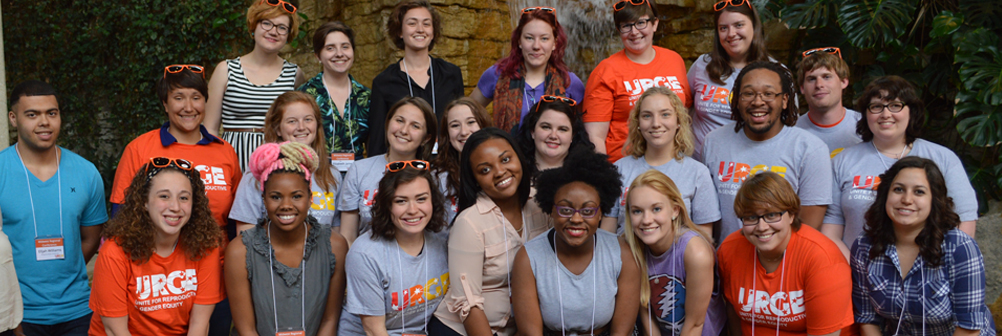BDS-Empowerment: 5 Things the Lifestyle Does Right

Posted by Rachel Bezek
December 7, 2016

Image via Wikimedia
Fifty Shades of Grey, that one Rihanna song from a few years ago, and countless Tumblr blogs — BDSM has become an up-and-coming curiosity that has taken the world by storm. Though not many of the interpretations of it have been completely accurate, it has gotten my attention as well, especially after reading multiple articles debating the relationship it has to feminism. After doing my own research — Daniel Day Lewis style — and actually talking to people involved in the hobby, I’ve found multiple things that it does right, and things that I wish people would recognize without an Ellie Goulding song to glamorize it.
So, while this is by no means an attempt to persuade anybody into the lifestyle, these are the things that should be incorporated in any and all sexual relationships.
Consent
One of the first things they teach you in a BDSM setting is the importance of consent. Boundaries are always set up beforehand, and all parties involved are given an equal voice in what goes on, how it happens, and when it stops. Often times, drugs or alcohol are not allowed into any parties or gatherings for safety reasons and consent issues. The extensive definition of consent is always taught, and it’s required that it be ongoing and valid in every other way.
While BDSM is often thought of as illicit and abusive, it places much more value on consent than many other institutions. Consent is the vital pillar that the relationships stand on, and members have told me that it’s a principle that needs to be proven in each prospective person that wants to join. With such a value, it creates safer and more competent interactions, and provides a healthier foundation for all relationships.
Openness of sexuality
In the BDSM community, sexuality is not a sin or a taboo subject. Many accept sex as a normal part of society, or even especially important to their own lives. Some keep the lifestyle to themselves and others let it into other areas of their lives — some express their sexuality with others and some choose not to. There isn’t one way of expressing sexuality, and being shy about it doesn’t invalidate you.
By erasing the shame that’s often connected to sex, especially taboo sexual habits, BDSM lets anybody that is interested experiment without fear or embarrassment. It keeps sex from being a dark, secretive part of life that is only meant to be enjoyed in a certain way or between certain people. Those with the confidence, can be naked at the parties, others can be in a safe room and enjoy a talk about mundane things. It is completely up to the person, and that draws many people to the community.
In BDSM, the focus on the male gaze and set gender roles associated with sexual openness and aggression are ignored– sex isn’t just for men, but for anyone that had the inclination and enjoyed experimenting.
Focus on safety
Quick searches on the Internet and Youtube showed me that, not only does BDSM give many the feeling of danger and excitement, but it also provides safety and security. There are many resources to be found that give people tips, tutorials, and explanations on how to keep someone safe during a BDSM-style scene. This can include lessons on proper bondage, safe words, knowing pain limits, and other ways to make sure the body, mind, and soul stay safe during the practices.
Often times, interested persons are encouraged or required to attend classes or an orientation before going to meetings between other members or play parties. This allows for new people to know the rules about how to engage in conversations, how to respect the boundaries of others, and what to expect. This also lets group leaders, gauge first timers on how they would mesh with the group. One bad feeling can immediately cause a participant to be restricted from attending group events. Background checks are also used to protect everyone from people who may have assault charges against them.
This standard puts emotional and mental health on the same level as physical — seeing all as equally important when someone is finished with an experience.
Communication
Like the saying goes, communication is key. It allows for opinions, thoughts, requests, and demands to be heard. It’s a widely held belief that a BDSM relationship without consistent, uncoerced, and honest communication is assault and abuse.
Through talking to people involved, I’ve found that it has become habit for those that are doing the tying, binding, or otherwise dominant positions in the dynamic to consistently and routinely make sure that a boundary is not crossed and that everybody is still feeling good about the situation. It’s also not uncommon for friends in groups to communicate difficulties or issues they might have when it comes to sex, allowing communication to help solve personal problems that might otherwise be dismissed as too obscene to talk about.
Communication and the empowerment that can come with it, is key in these relationships. Even those who take on more submissive roles have their opinion and voice validated at every turn. By creating a culture that highly encourages or requires that type of communication, it allows for people to make their own decisions and keep their boundaries clearly drawn in the sand. The same cannot be said for many so-called ‘normal’ relationships, where the value for communication needs to be constantly reminded as valuable.
Disregarding the norms of sexuality/gender/relationships
When doing my research, I spent some time on the social media sites that allow for communication between those with the same interests in BDSM, and discovered that the gender binary was virtually ignored. Fetlife, which describes itself as a Facebook for kinksters, offers the options of genderqueer, gender fluid, intersex, femme, butch, or not applicable for gender. It also offers heteroflexible and homoflexible, asexual, queer, fluctuating, pansexual, and unsure for sexual orientations. These options are treated as equally valid compared to the straight, cisgender counterparts, and Fetlife makes it impossible to search for people based on gender, allowing all profiles to get equal traffic.
As well as that, polyamory seemed to be a welcomed and frequent practice in the community as well. Though the people may be married or in a serious relationship, it has been normalized to accept sexuality and experiment with relationships outside of monogamy. Some relationships are platonic, though they can include a sexual dynamic, others are romantic with the sexual dynamic, and there can also be romantic or platonic relationships that stay in more of the vanilla, or socially acceptable sexual habits, realm of sex.
People can be who they want to be, allowing them to pick a label for themselves that is as specific or as broad as they’d like. Nobody has to compromise who they are to get access to this site, an important lesson that many institutions need to learn.
I know that BDSM is not lifestyle for everyone. Some don’t like the idea of handcuffs or play parties, but there are certain things that should never be debatable in any relationship. To outsiders looking in, the lifestyle seems mysterious or villainous; but those misconceptions have allowed for the right kind of habits to form as BDSM’s foundation, leading to ultimate sex positivity. The people I talked to made it very clear that there are individuals that believe in their own rules that contradict the general culture that is encouraged. However, they are constantly fighting to keep the bad out and maintain a lifestyle that’s a perfect fit for so many. Until the core ideas of real BDSM relationships become more important to the general population than the fictional and sensationalized one between two characters that couldn’t understand the lifestyle less if they tried, those in the culture will keep pushing to destigmatize it.
Leave a Reply
You must be logged in to post a comment.

